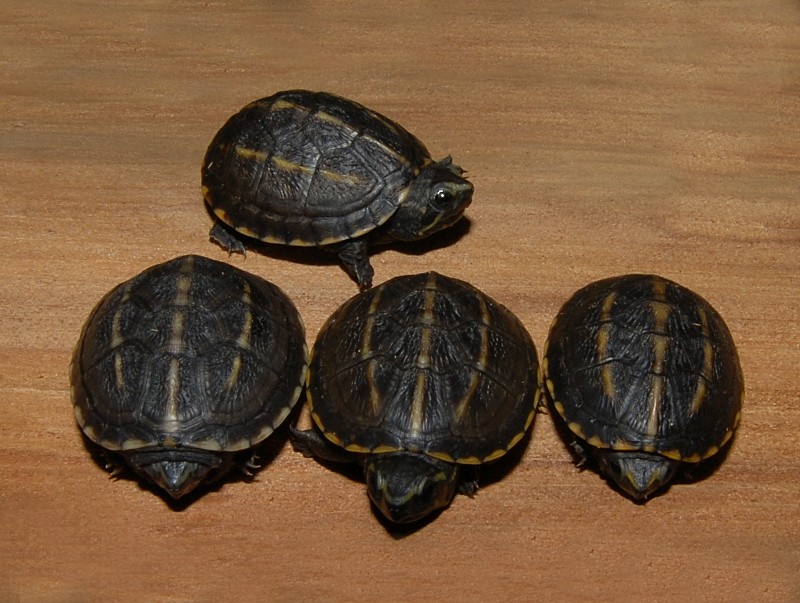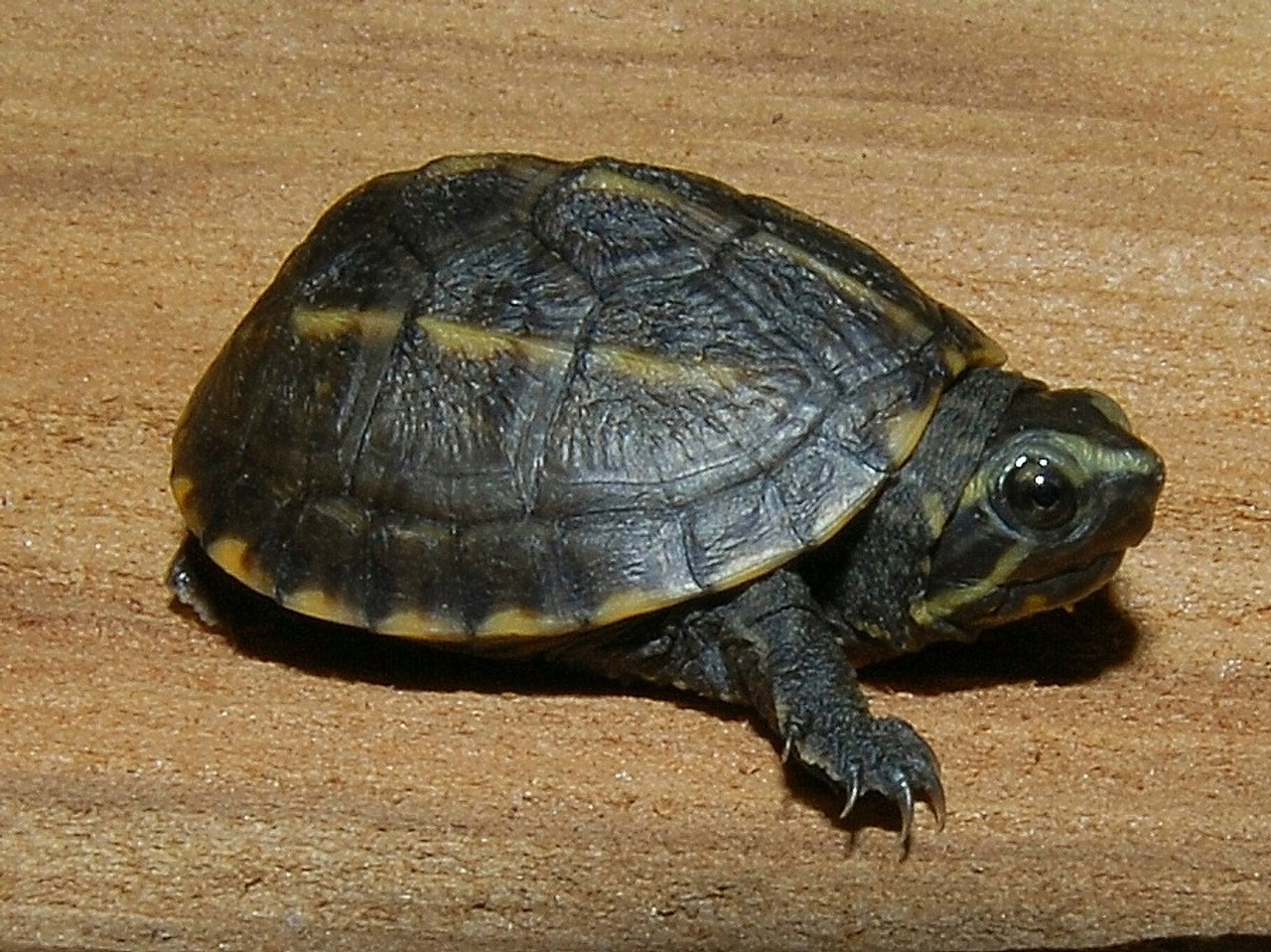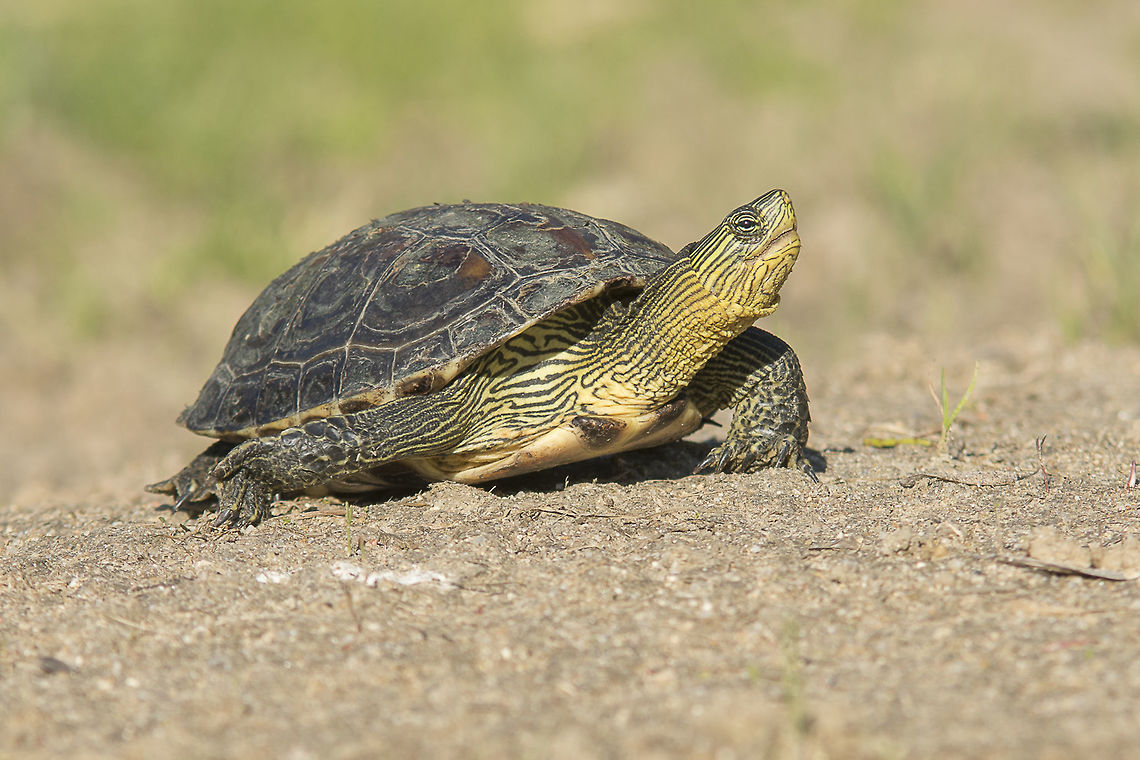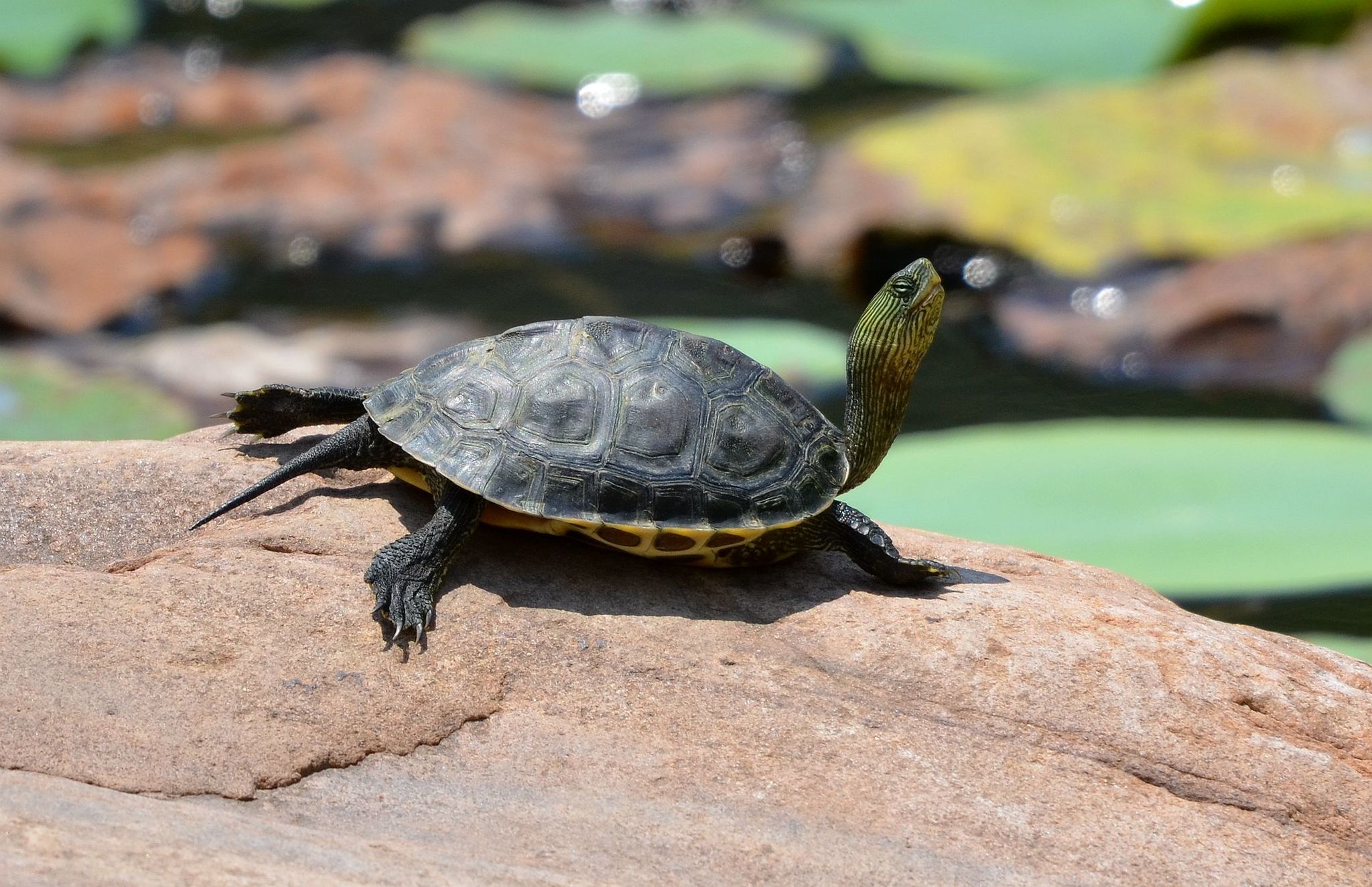The three-striped turtle, also known as Cuora trifasciata or the Vietnamese pond turtle, is a fascinating species beloved by reptile enthusiasts and conservationists alike. Native to parts of Southeast Asia, this turtle is well known for its distinctive black and yellow stripes that run along its shell. While many are drawn to the idea of keeping a three-striped turtle as a pet, there is much more to this species than meets the eye. From its natural habitat to its endangered status, caring for these turtles requires not only proper knowledge but also a commitment to conservation. Let’s dive into what makes the three-striped turtle so special, how to care for one, and what’s being done to protect this remarkable species.

What is the Three-Striped Turtle?
Physical Characteristics and Appearance
The three-striped turtle gets its name from the three dark, prominent stripes that run along the length of its olive or brown shell. These stripes are the species’ most notable feature and make it easily identifiable compared to other turtle species. It’s a relatively small turtle, typically growing to about 7–10 inches in length. The underbelly, or plastron, is usually a pale yellow, sometimes with darker blotches. Its head is also marked with lighter yellow stripes, blending well with its natural habitat.
Native Habitat and Range
The three-striped turtle is native to the freshwater environments of Southeast Asia, particularly in Vietnam, China, and parts of Laos. It thrives in slow-moving rivers, ponds, and marshy wetlands, preferring environments rich in vegetation and muddy bottoms. This turtle is semi-aquatic, meaning it spends a good deal of time both in the water and on land, basking under the sun and foraging for food. Unfortunately, its natural habitat is increasingly threatened by human activities, which have pushed the species to the brink of extinction.

How to Care for a Three-Striped Turtle
If you’re considering keeping a three-striped turtle as a pet, it’s essential to replicate its natural environment as much as possible. These turtles have specific needs that, when met, will help them thrive in captivity.
Proper Enclosure Setup
To create the ideal habitat for your turtle, you’ll need a spacious aquarium with both aquatic and terrestrial zones. A 50- to 75-gallon tank is recommended for a single adult turtle. Ensure that the water is clean and filtered, as poor water quality can lead to health problems. The water should be kept at a temperature between 75°F and 85°F, and the land area should have a basking spot with a heat lamp that maintains a temperature of around 90°F. Be sure to provide UVB lighting, which is crucial for their shell and bone health.
Diet and Feeding Guidelines
Three-striped turtles are omnivores, meaning they eat both plant and animal matter. In the wild, they feed on a variety of things, including aquatic plants, insects, and small fish. In captivity, their diet should include high-quality turtle pellets, leafy greens like kale or dandelion, and protein sources such as feeder fish, insects, or freeze-dried shrimp. Feeding them a varied diet will ensure they receive the right nutrients to stay healthy.
Health Considerations and Common Issues
Like all reptiles, three-striped turtles can be prone to certain health issues if not properly cared for. Shell rot, respiratory infections, and vitamin deficiencies are common ailments in captive turtles. Shell rot is often caused by poor water quality or insufficient basking time, while respiratory issues can develop if the turtle is kept in a drafty or cold environment. Regular veterinary check-ups, clean water, and a well-balanced diet are key to keeping your turtle healthy.

Conservation Status and Threats to Survival
The three-striped turtle is currently listed as critically endangered by the IUCN Red List. Habitat destruction, illegal poaching, and the wildlife trade have all contributed to its drastic decline in the wild. Many turtles are captured and sold as pets or used in traditional medicine, particularly in China, where their shells are believed to have medicinal properties.
Endangered Status of the Three-Striped Turtle
With their numbers dwindling, the three-striped turtle is one of the most at-risk species of freshwater turtles in the world. In the wild, it’s estimated that fewer than 10,000 individuals remain. This alarming figure has sparked efforts from conservation organizations to protect and breed these turtles in captivity.
Conservation Efforts and Breeding Programs
Several organizations, such as the Turtle Survival Alliance and the WWF, have launched breeding programs to help bolster the population of three-striped turtles. These programs aim to eventually reintroduce the turtles into the wild while raising awareness about their plight. Zoos and aquariums around the world are also participating in conservation efforts, working to breed healthy turtles and educate the public about the importance of protecting endangered species.
How You Can Help
There are several ways you can support three-striped turtle conservation. If you’re passionate about wildlife preservation, consider donating to reputable conservation organizations. Additionally, spreading awareness about the endangered status of the three-striped turtle can help reduce illegal trade. If you own a turtle, make sure you’ve purchased it from a certified breeder, rather than contributing to the illegal wildlife market.

The Importance of the Three-Striped Turtle in Ecosystems
Ecological Role in Freshwater Habitats
As with many turtle species, the three-striped turtle plays an essential role in maintaining healthy freshwater ecosystems. These turtles help control aquatic vegetation and maintain a balanced food web by preying on insects and small fish. They are also prey for larger predators, making them a critical part of the ecosystem’s food chain.
Effects of Habitat Destruction
Unfortunately, habitat destruction caused by agricultural expansion, pollution, and urban development has significantly impacted three-striped turtle populations. Wetlands are being drained, and water sources are becoming increasingly polluted, leaving turtles with fewer places to live and breed. Protecting these natural environments is crucial for the survival of not only the three-striped turtle but countless other species that depend on them.

How to Support Turtle Conservation
Volunteer Opportunities
If you’re eager to get involved, consider volunteering with organizations dedicated to turtle conservation. Many groups offer opportunities to assist with field research, habitat restoration, or educational programs that help spread awareness about the importance of turtle preservation.
Organizations Dedicated to Turtle Conservation
Several leading conservation organizations focus on protecting turtles, including the Turtle Survival Alliance, WWF, Wildlife Conservation Society, and San Diego Zoo Wildlife Alliance. By supporting these groups, you can contribute to efforts that ensure a future for endangered turtles like the three-striped turtle.
FAQs
- What do three-striped turtles eat?
Three-striped turtles are omnivores and enjoy a diet of leafy greens, turtle pellets, and protein sources like fish and insects. - Are three-striped turtles good pets?
While they can be kept as pets, they require specific care, including a large tank, a varied diet, and UVB lighting, making them a commitment for dedicated owners. - How endangered is the three-striped turtle?
The three-striped turtle is critically endangered due to habitat loss, poaching, and illegal trade. - Can I adopt a three-striped turtle from a conservation program?
Some conservation programs offer opportunities to adopt turtles, either symbolically or through regulated breeding programs. It’s essential to ensure any turtle you adopt comes from a legitimate source.
The three-striped turtle is more than just a beautiful creature with striking markings. Its survival is tied to the health of ecosystems and the efforts of those committed to its conservation. As conservationist Baba Dioum wisely said, “In the end, we will conserve only what we love; we will love only what we understand; and we will understand only what we are taught.” Understanding the plight of the three-striped turtle is the first step towards ensuring its survival for future generations.

